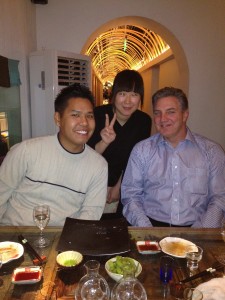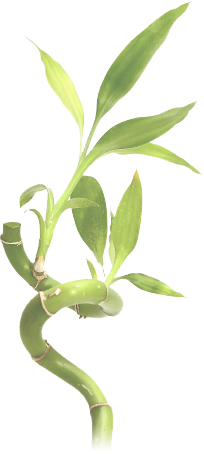Best Sake in Beijing
Posted by bmountain | Posted in Restaurants, Sake | Posted on 23-12-2011
Note to SakeWorld readers, if you’re ever in Beijing and looking for a good, reasonably priced Japanese restaurant, don’t ask your concierge. I’m firmly convinced all the hotels are in cahoots and concerned solely with sending each other business, regardless of what you’re actually looking for.
concerned solely with sending each other business, regardless of what you’re actually looking for.
I was back in Beijing for a conference in early December staying at the Shangri-La China World Summit Wing Hotel. At 81 floors it’s the tallest hotel in Beijing with spectacular views of the city. From my room I could see the Olympic Stadium in the distance and right next door was the iconic China Central Television Headquarters. In most areas the service is impeccable, in the lobby and on the 64th floor residents lounge there are staff everywhere looking to help. The gym is near the top floor with wall to wall windows and fully decked with the latest equipment.
Given the overwhelmingly great service I had experienced since checking in, I was expecting the same from the concierge. I had plans to meet a customer for dinner and asked the concierge for a place that was good, casual, not too expensive, with a decent sake menu. He pointed me to Inagiku. Perhaps something was lost in the translation? My criteria included casual – according to CityWeekend Inagiku is a “sprawing, swanky Japanese chain”. My other request was inexpensive, again according to CityWeekend “The food on the whole is very impressive, but be prepared to spend a lot to really enjoy a meal here.” According to TimeOutBeijing.com “Michael Chin, the gregarious owner…. is proud of Inagiku’s decadence along with the high-grade beef, which he pushes with fierce determination. At 650RMB/100g ($100 USD), you’ll decide your own resistance level.”
Not exactly what I was looking for. Fortunately I had purchased a data plan for China and a little searching on my new iPhone 4S pointed me to Sake Manzo, according to the Beijinger.com “Part sake bar, part restaurant, this Izakaya comes highly recommended for its surefire combination of authenticity, intimate cool, extensive menu of both food and drinks. The menu impresses and informs with chef’s recommendations, instructions on how to get the most out of selected dishes and an idiot-proof guide to ordering sake.” BINGO. I called my useless concierge back and had him cancel Inagiku and book a table at Sake Manzo.
One thing that surprised me about Beijing this trip was just how hard it was to get around without Chinese. In previous visits I’d always been with hosts so this was the first time I did any travel within the city alone and since most taxi drivers don’t speak or read English it’s essential to have your destination written in Chinese characters. The other thing that surprised me was how quick they are to turn the meter off when you arrive at your destination and if you’re not paying attention they round up a few RMB. Or they don’t turn the meter on at all and suddenly what should have been a 15 or 20 RMB trip ($3-$4 USD) turns into a 70 RMB trip. It’s not a lot of money but after a week of multiple taxi rides per day it adds up. The on-line travel sites recommend no tipping in China but my taxi from the airport asked for 100 RMB when the meter said 78.
I met my customer and good guy Peter Do from the Internet domain registar Dynadot at his hotel and we shared a cab to the restaurant. Sake Manzo is very much out of the way on a quiet side street in a mixed retail and residential area. We

Chef's Selection at Sake Manzo
elected to sit at the sushi bar, the service was fast and our server who’s English name was to our delight “Porsche” was knowledgable and very helpful. The sake menu is divided in sections, super premium, fragrant, dry, and fruity. We started with a Kubota Senju Daiginjo from the super premium section. Slightly dry, food-friendly taste, perfect to start off the meal.
We ordered the chef’s selection sushi plate and some shared plates like chicken meatballs. We could tell from the food preparation that the owner is Japanese, sushi was fresh, meticulously prepared, and excellent. We also ordered some Japanese tapas, the chicken meatballs were superb.
With Porsche’s guidance we moved on to a Born Ginsen for our second sake. Very fragrant, a new one for me and it was a great complement to the meal. Our third sake was a Kubota Manju, junmai ginjo, SMV +2. This sake is slightly aged and has a truly elegant flavor.
We were surprised when after our plates were cleared the restaurant manager came over with a special sake for us to try. He poured us two glasses of Born Daiginjo sake from the Katokichibee Shoten brewery in the Fukui region of Japan. Extraordinary sake, I had chills running down my spine.
All good things must come to an end so we paid our bill, 800 RMB or $123 dollars, slightly more than one plate of beef at Inagiku. I’m sure we made the right choice and next time I’m in Beijing I will be visiting Sake Manzo again.
It was a busy week but I did arrange to visit the Temple of Heaven during my few hours of free time. The Temple of Heaven, literally the Altar of Heaven is a complex of Taoist buildings situated in the southeastern part of central Beijing. The complex was visited by the Emperors of the Ming and Qing dynasties for annual ceremonies of prayer to Heaven for good harvest. It is regarded as a Taoist temple, although Chinese Heaven worship, especially by the reigning monarch of the day, pre-dates Taoism.
The temple complex was constructed from 1406 to 1420 during the reign of the Yongle Emperor, who was also responsible for the construction of the Forbidden City in Beijing. The complex was extended and renamed Temple of Heaven during the reign of the Jiajing Emperor in the 16th century. The Jiajing Emperor also built three other prominent temples in Beijing, the Temple of Sun in the east , the Temple of Earth in the north , and the Temple of Moon in the west . The Temple of Heaven was renovated in the 18th century under the Qianlong Emperor. Due to the deterioration of state budget, this became the last large-scale renovation of the temple complex in the imperial time.
The temple grounds cover almost 3 square kilometers and contain beautiful examples of Chinese architecture and diverse parkland. In one area you are in a pine forest, in others you’re on a vast

Peter Do, "Porsche", and Bob Mtn at Sake Manzo
terrace, or an ancient courtyard, or a raised walkway traversing the park from north to south. And all for about $5.00 USD, if you can avoid the peddlers out front who for some reason all want to sell you large furry Russian hats. My entrance was a little sobering as I arrived at the wrong gate and tried to take a shortcut to the correct one and cut down an alleyway. The walkway just outside the park was lined with tiny huts where people lived, most smaller than your average Toyota minivan. I think they were as surprised to see me as I was to see that lifestyle. Really makes you appreciate what you have.
My only other experience this trip outside of the hotel-restaurant-conference center-airports quadfecta was Yashow for some shopping. The last time I was in Beijing I visited there, a multi story building with hundreds of stalls selling everything from clothing to consumer electronics to exotic tea’s. Last time the bargains were beyond belief so imagine my surprise when at my first stop to buy shirts the vendor tried to sell me a Polo Ralph Loren cotton button down shirt for 1,090 RMB. That’s about $170USD, for a shirt I could get at $30 at Marshall’s in Boston. Took a little doing but I negotiated a good deal but of course the owner made it seem like I was stealing food from his family. Trick there is to make an absurdly lowball offer and when they counter, just throw up your hands and walk away. If they chase you and give your price, you have a deal. If not, go to another stall selling the same goods, and increase your offer a little. Works wonders.
Another change from my last trip was the area immediately outside of Yashow, called Sanlitun Village it seems like Bourbon Street meets Freeport Maine. Outlet mall style stores, live music, and lots of offers from people wanting to spend time with you. The live music was a riot, I stopped in a couple of places and each one had a keyboardist playing a little but more syncing digital tracks for one of three singers standing on the stage. Each took turns singing and when it wasn’t their turn they would surf their iPhone waiting for their time to sing. I couldn’t understand why they wouldn’t sing backup or do some harmonies but I was impressed with their talent, they could all really sing and while I didn’t recognize the songs, they were catchy and well arranged. The keyboardists when they did play were excellent. Very fun.
All in all, a very enjoyable visit to Beijing, good business, interesting sights, and excellent sake. My idea of a great trip. Now if I could have gotten that concierge in line it would have been perfect.
Sake MANZO
Tuanjiehu 团结湖
7A Tuanjiehu Beisantiao, Chaoyang District
朝阳区团结湖北三条甲7号
010-6436-1608
www.manzo-dining.com


